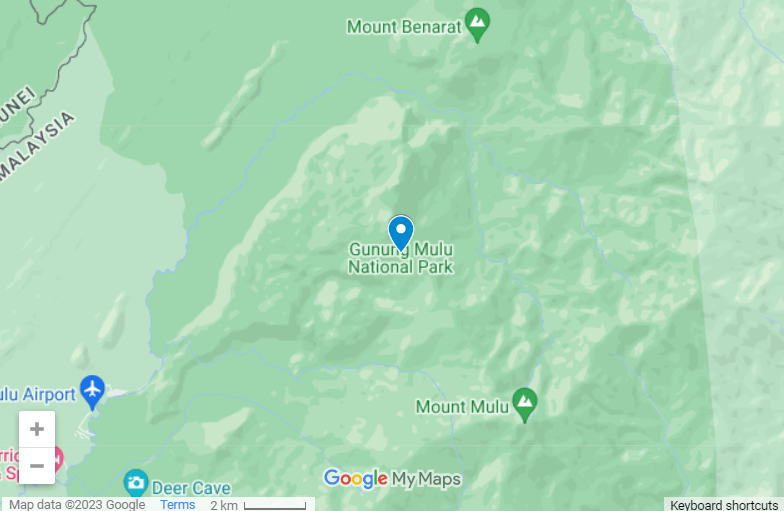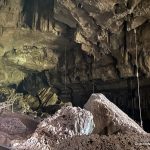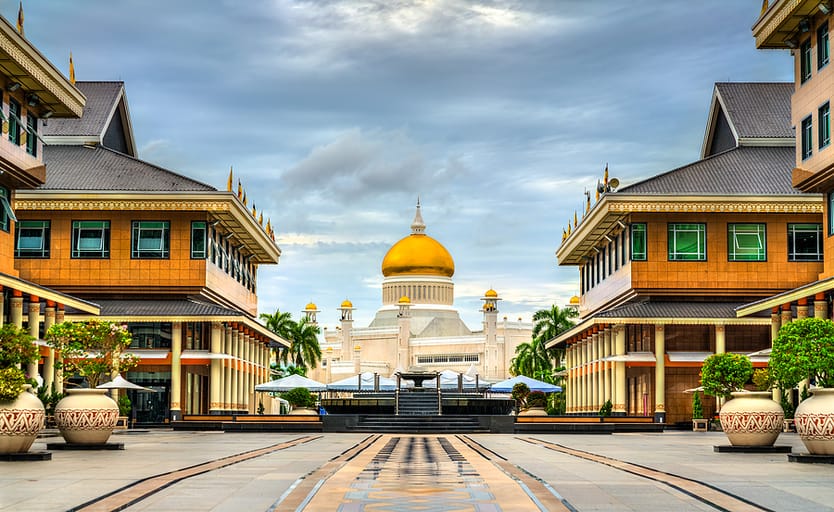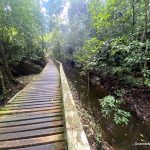Located inside the Gunung Mulu World Heritage Area, the Mulu Caves boast an extensive network of caves renowned for their size, complexity and geological formations such as stalactites, stalagmites, and limestone pinnacles. These formations have been sculpted over millions of years and are a sight to behold.
They are unique and fairly straightforward to visit tucked away on the island of Borneo in the state of Sarawak.
There is a whole range of Mulu Caves from Show Caves (caves that can be visited easily without special training or equipment) to Adventure Caves (which are more adventurous to visit). There’s the Deer Cave which has the longest cave passage open to the public or the Sarawak Chamber which is the largest cave chamber in the world.
All up, it’s an amazing place to visit.
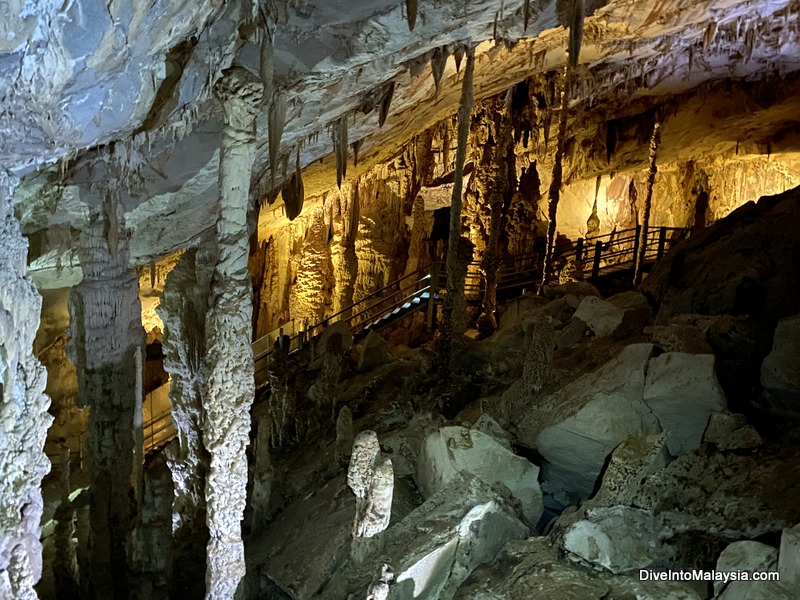
In this guide, I share a full Mulu Caves review based on my experiences visiting the Mulu Cave Sarawak Malaysia. It has everything you need to know about visiting these caves including Mulu Caves facts, Mulu Caves tour package options, ticket prices and how to get to Mulu Caves Sarawak. I also share detailed information about the main caves.
You can also read my full guide to visiting Gunung Mulu National Park here. This gives you everything you need to know about this area in addition to the Mulu Caves in Sarawak. There are other things to do in this area too and it has your accommodation options and more.
Travelling to Malaysia? Click here to download your free Malaysia Trip Planning checklist. We’ll help you get ready for your trip!
Have any questions? Join our Malaysia Travel Planning Facebook group here now! It’s the perfect place to ask any questions and to be inspired.
Contents
Mulu Caves
The history of the Sarawak Mulu Caves starts about 5 million years ago when the first caves started to form here. Sideways movements of the Earth lead to the formation of side-by-side limestone and sandstone mountains.
Add in millions of years of heavy rain and this flowing water cut out the huge cave complex that you can visit at Sarawak Caves Mulu. In fact, this is still continuing today with caves shaping and shifting as time goes by.
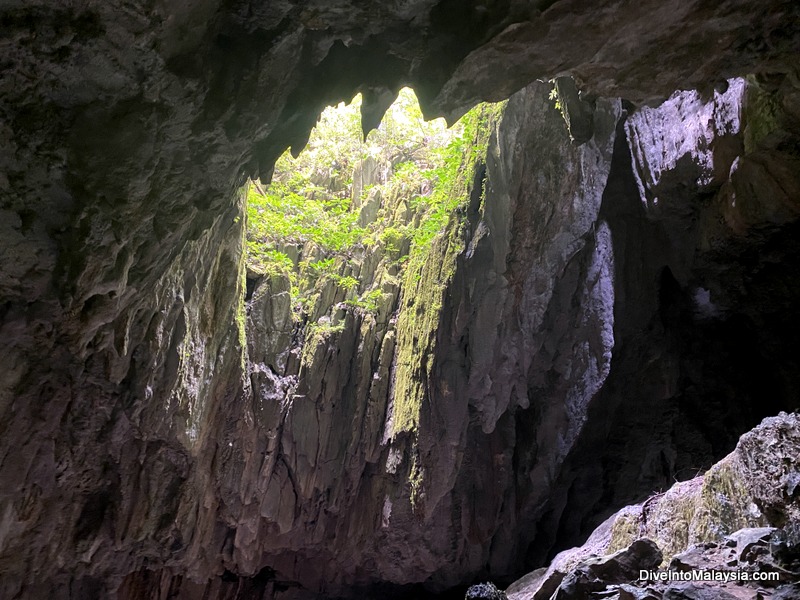
The exploration and scientific research of the Mulu Caves began in the 19th century. In 1858, the British adventurer Spenser St. John explored some caves in the area, but it was not until the mid-20th century that more systematic expeditions were conducted.
Expeditions in the 1920s, 1930s and 1960s lead to more caves being discovered as well as documentation of the unique flora and fauna inhabiting the area.
In 1974, the Gunung Mulu National Park (also called Mulu Caves National Park Sarawak) was established, encompassing the Mulu Caves and the surrounding rainforest. The park was designated a UNESCO World Heritage Site in 2000, recognising its outstanding universal value and ecological importance.
Over the years, numerous scientific expeditions and studies have been conducted within the Mulu Caves. These investigations have contributed to our understanding of cave geology, speleology (the study of caves) and the ecology of the rainforest ecosystem.
The Gunung Mulu Caves have also attracted attention from adventure seekers and cave enthusiasts. The challenging terrain and the allure of exploring vast cave systems have drawn explorers and cavers from around the world. Adventurous expeditions have pushed the boundaries of cave exploration, mapping new passages and documenting their geological formations.
Although you don’t have to be adventurous to come here to enjoy and learn about the caves. Today, it’s never been easier to visit with a range of Show Caves and tours to make it extra easy and interesting. The tours to visit are also very reasonably priced.
The Malaysia Mulu Caves also continue to be a hub for scientific research and conservation efforts. The park authorities work closely with local communities to preserve the cultural and natural heritage of the area while allowing visitors to experience the unique wonders of the caves and the surrounding rainforest.
The Caves are deep in the rainforest, and it does take some trekking, boating and effort to get to them. However, things are made as straightforward as possible so you can visit the Show Caves which are the caves that don’t take any special training or equipment to visit.
Directly below, I share more information about the individual caves including how to get to them from inside the Mulu Caves National Park Malaysia. Below this is more information about the location of the national park, Mulu Cave tour package information and other practical information you’ll need for your trip.
The first four caves described are the most popular (and for good reason). I highly recommend you book tours for these. Note that all caves can only be visited with a guide.
Make sure you wear great shoes as paths can be slippery. Also take a raincoat, water, torch and a snack for longer tours.
Mulu Deer Cave
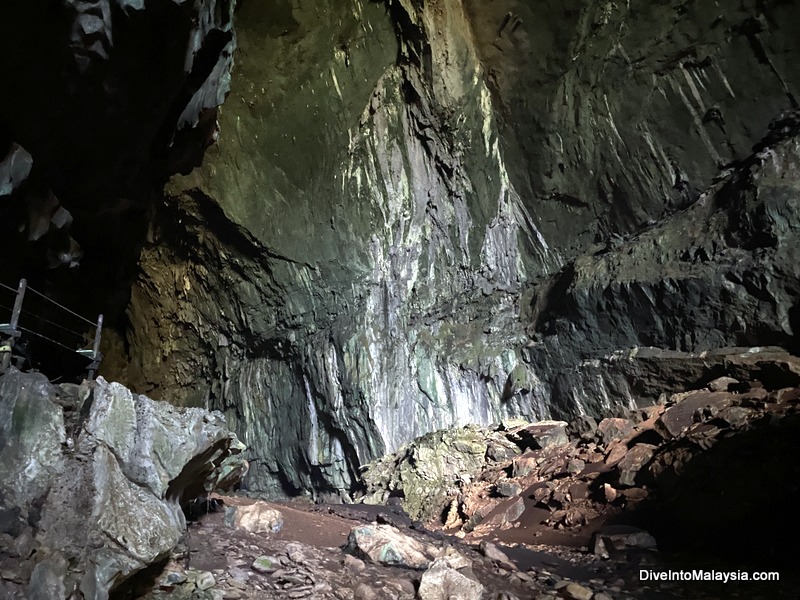
Deer Cave is the biggest show cave at Mulu Caves in Malaysia and also has the largest cave passage in the world. It’s over two kilometres long and 174 metres high. It was formed by a fast flowing river that used to come through here.
Deer Cave is located in the Southern Hills area of the park and is a 3.8 kilometre walk from park headquarters on wooden planks which were in great condition when I visited with most looking like they were recently replaced. The walk itself is easy and relatively flat. There are some inclines and declines – but nothing that noticeable.

With your guide, you are able to walk about 800 metres inside the cave and get to see many sights including Adam and Eve shower heads which are ceiling spouts that water flows through. However, the part that is really amazing and enjoyable about walking through this cave is how big it is. It’s huge!
On the tour, you follow a path through to the passage to the Garden of Eden at the end. There are plenty of viewpoints where you get great views of the cave.
The path is boardwalk, metal paths and stairs. It is slippery at time, although nothing too terrible and there is plenty of guano around (bat poo). It smells disgusting and you’ll get some great views of the guano as well!
This is because the cave is also home to 2.5-3.5 million bats that cling to the roof.
You are able to walk until the Garden of Eden which is a point where the ceiling collapsed, and you can see out into the rainforest. It’s very pretty. You can also here running water here.
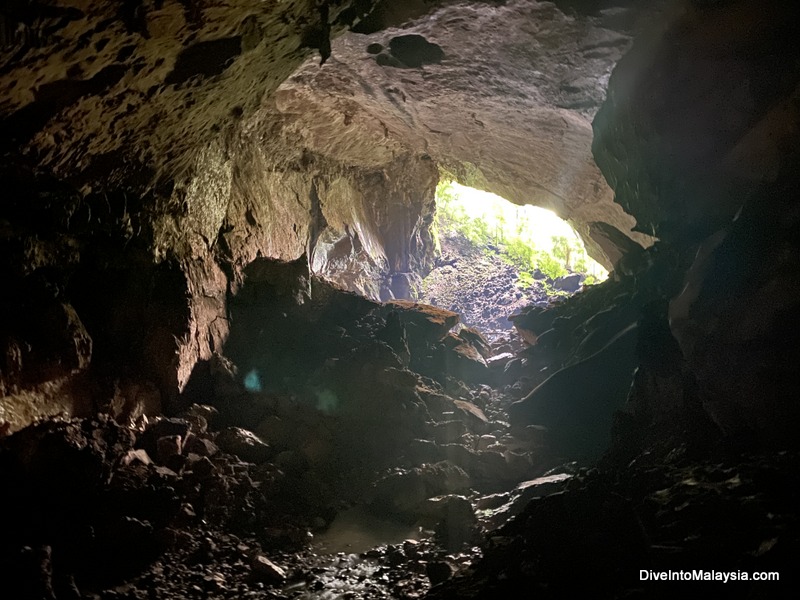
Tours then turn around and head back out. The way our guide did this is that he went last and we could take our time walking out. This was great as I felt like I had the cave to myself at times – amazing! Especially since it was a busy day when I was here.
Tours to Deer Cave include Lang Cave as well which is where you’ll walk to next. It’s right next door. Some tours also do the caves in reverse order.
After you visit the two caves, the tour ends and you can watch the bat exodus on the way back to headquarters. This is the name given to when the bats that live in Deer Cave exit the cave in twirling clouds of bats. There is a special Mulu Caves bats observatory to watch this from.
This observatory is a short walk from the cave. There are toilets here as well as a small stall selling drinks and snacks.
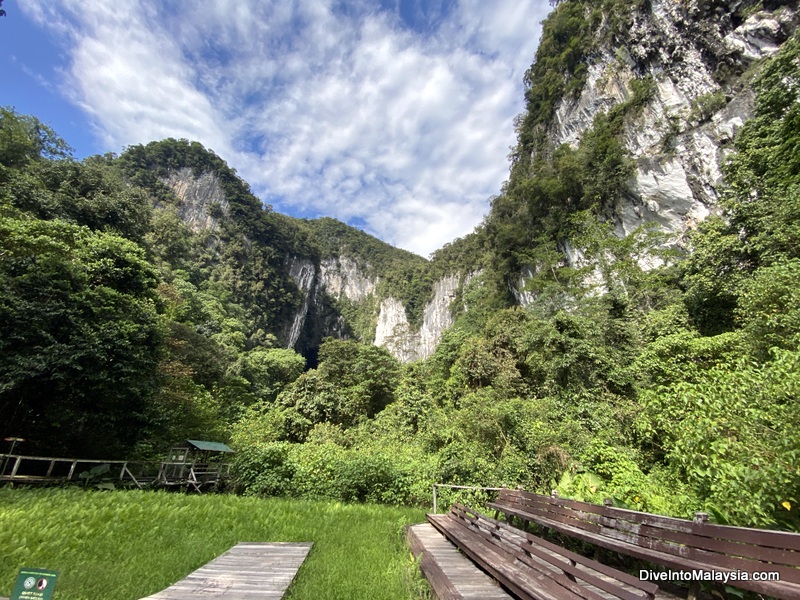
The bats can exodus anytime from 4pm with about 5:30pm being common. It’s an amazing sight! Unfortunately, there is no guarantee that they will come out. It’s especially unlikely in heavy rain but it was clear and beautiful weather when I was here, and they did not come out either.
This is about 3 kilometres from headquarters so you’ll most probably walk back in the dark. Make sure you have a torch.
Tours depart around 2pm to visit this cave and they take about 3 hours plus time taken to watch the bat exodus and get back to headquarters. The walk to the caves is about an hour with the guide pointing out flora and fauna along the way. I found I only took about 30 minutes to walk back.
Lang Cave Mulu
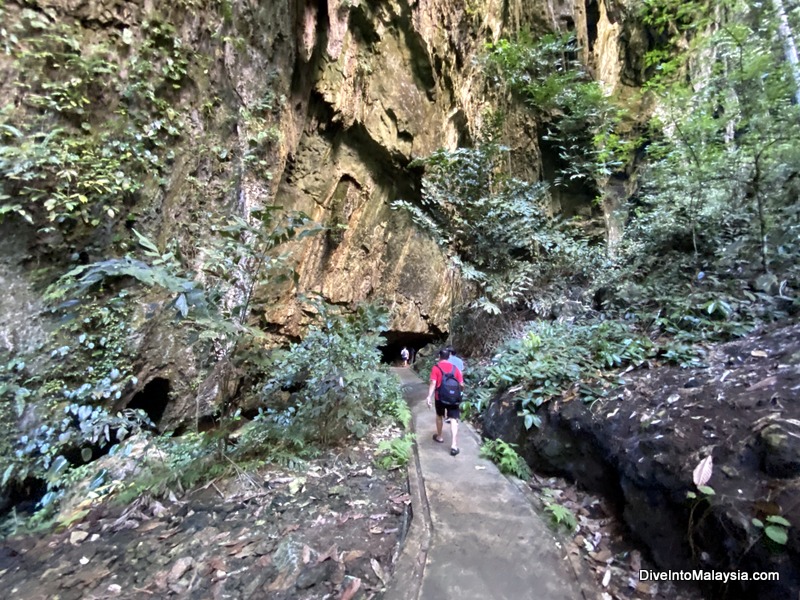
Lang Cave is smaller than Deer Cave with cool stalagmites, stalactites, rimstone pools and limestone shawls.
This cave was formed by standing water eroding the limestone rather than a river and it’s interesting seeing the differences.
Where Deer Cave was BIG, Lang Cave is intricate with lots of details to check out and enjoy.
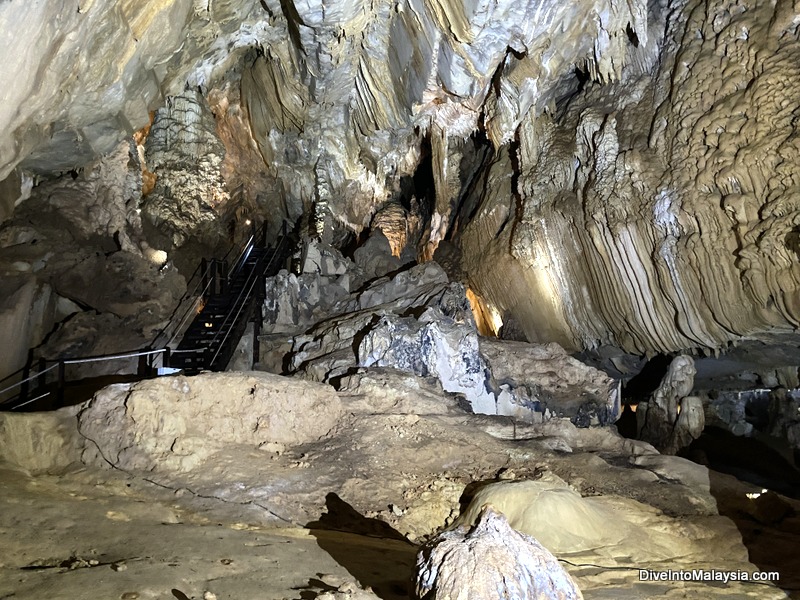
This is a path through the cave which does a loop at one point and there are some stairs. It’s an easy walk though, and I did not find it slippery. Our guide pointed out various features as we went through.
Again, we were able to walk out at our own pace and really take it in.
This cave is visited as part of the Deer Cave tour described above.
Wind Cave
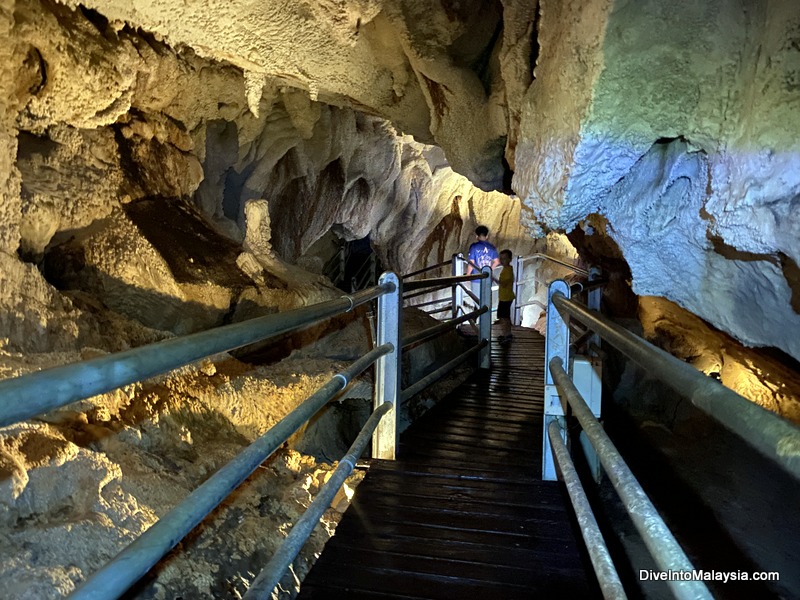
Wind Cave is named after the cool winds that blow through here. You’ll feel it when you hit the narrow part of the walk. There are some impressive chambers here such as the King’s Chamber which is filled with stalagmites and columns. There are lots of intricate details and formations to check out. It’s quite amazing actually and perhaps my favourite cave.
It reminded me of Lang Cave (which I had seen the day before), but on a much bigger scale. Lang was maybe slightly prettier though and I felt like I was closer to the formations in that smaller cave.
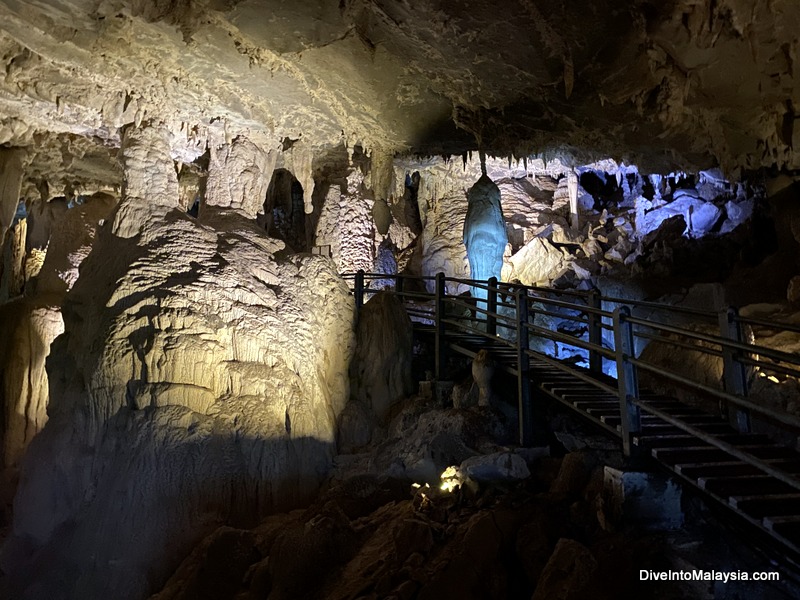
There is also Sky Garden which is where a sinkhole in the roof of the cave allows light in. This light has allowed plants to grow on the walls of the cave, It’s very pretty.
This cave was also formed by a river running through it and our guide pointed out how you could tell and also described the differences in how caves are formed if it’s a slow flowing river versus a fast one.
Wind Cave and Clearwater Cave (coming up next) are visited together as part of a tour leaving around 9am and taking up to four hours. These caves are located in the Gunung Api section of the park.
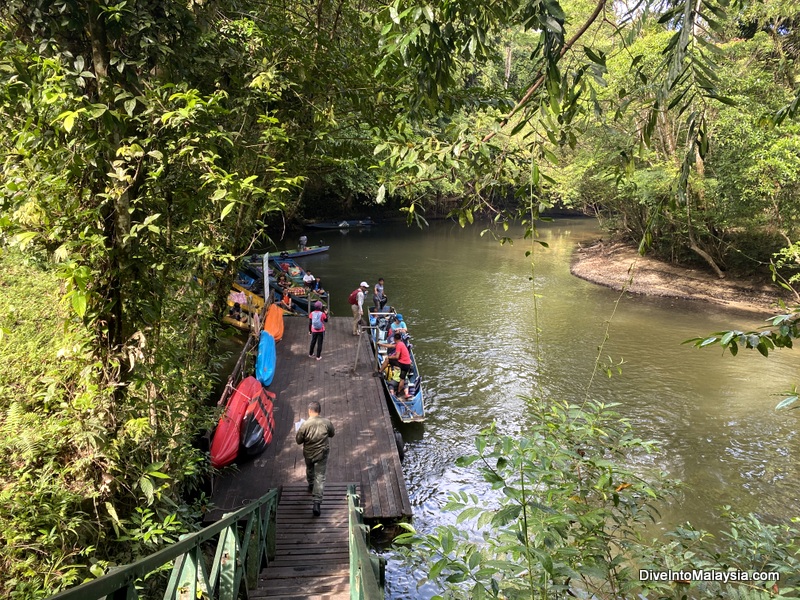
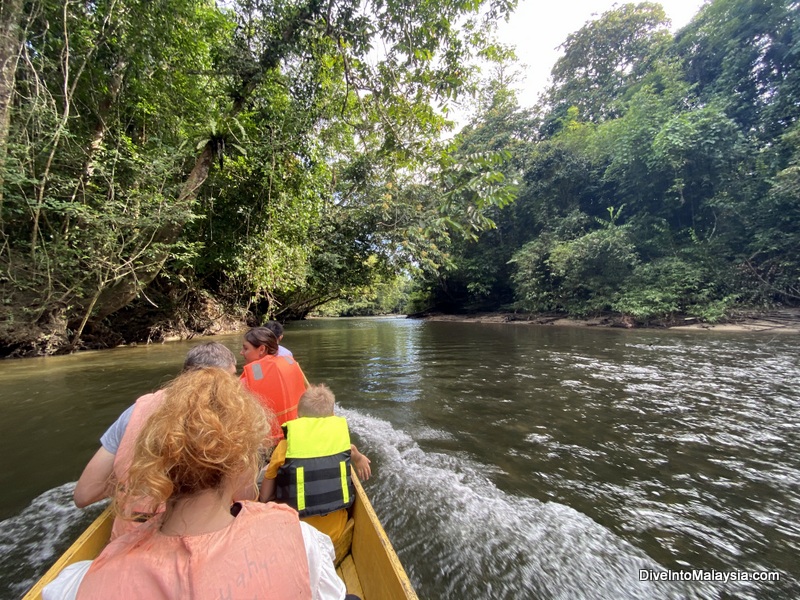
To get to them requires a scenic longboat ride up the Melinau river. It’s also possible to hike 4 kilometres instead, but the boat ride is very enjoyable. The scenery is amazing and it’s nice and cool. I loved it.
On the way, you get to stop at a Penan longhouse and market at Batu Bungan. At the (tiny) market, you can buy Penan (the local indigenous tribe) handicrafts (woven baskets and mats and jewellery). I read beforehand that this wasn’t open on Sundays, but I went on a Sunday and it was open.
However, I saw no sign of a longhouse to visit or any blow dart demonstrations which I had also read about here. My guess is that this may not have come back since the pandemic.
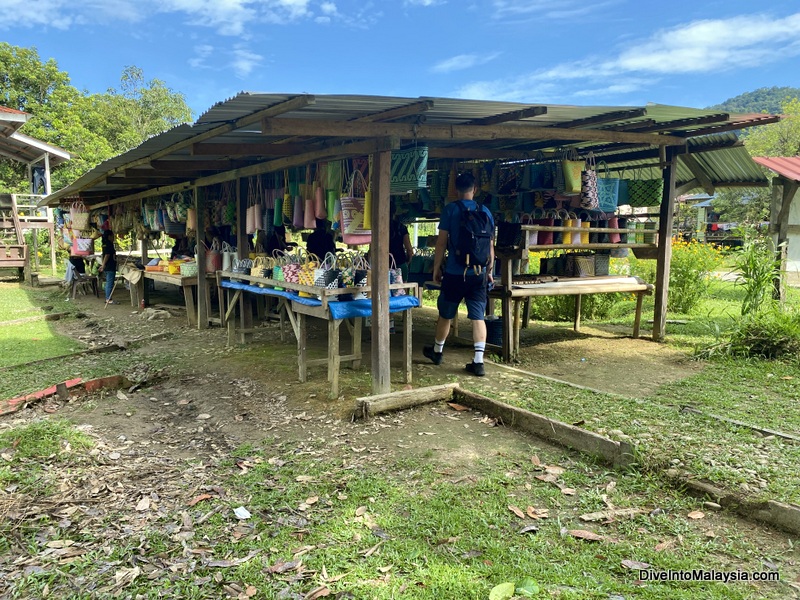
After the market, we hopped back in the boat and then headed to Wind Cave.
It’s an uphill walk on a wooden pathway to Wind Cave. It’s not steps, but an inclined path with wooden panels on top of the path to stop it being slippery. It’s fairly short and not that hard.
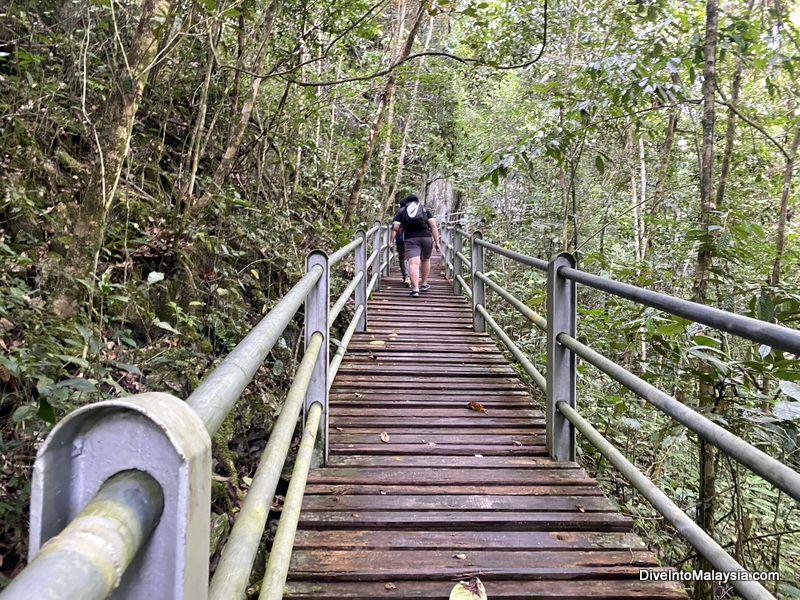
Inside the cave is wooden boardwalk as well as a concrete path and steps. One part if quite narrow, but the good part is that there is some cool air in here.
After we explored this cave, we were back on the boat and heading to Clearwater Cave.
Mulu Clearwater Cave
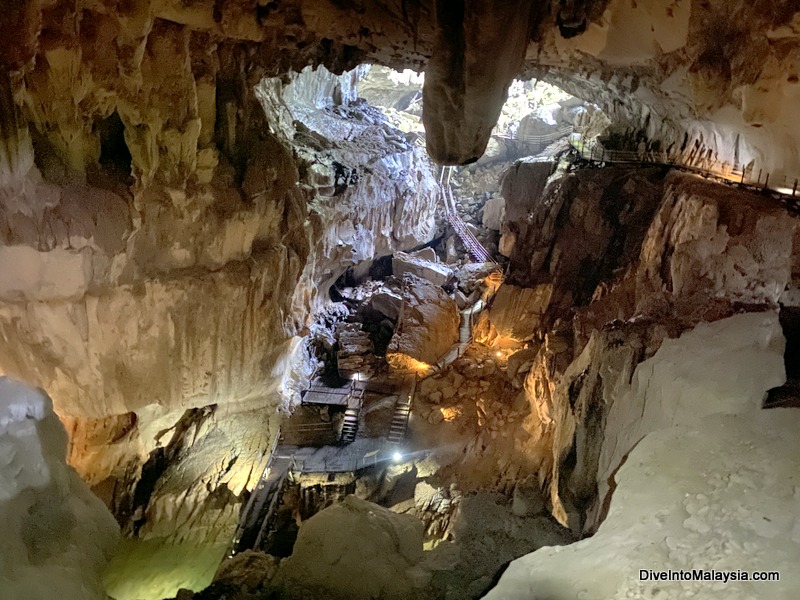
Clearwater Cave is named after the crystal clear river that runs over 200 kilometres through this cave system. It’s one of the biggest cave systems in the world at 220 kilometres.
You only get to see a small part on this tour (although it is possible to see more for experienced cavers). The cavern you get to walk through is HUGE! And the roar of the river is clearly heard as it rushes through making this cave even bigger.
That’s part of what makes this cave interesting – that you can see how the river is shaping it.
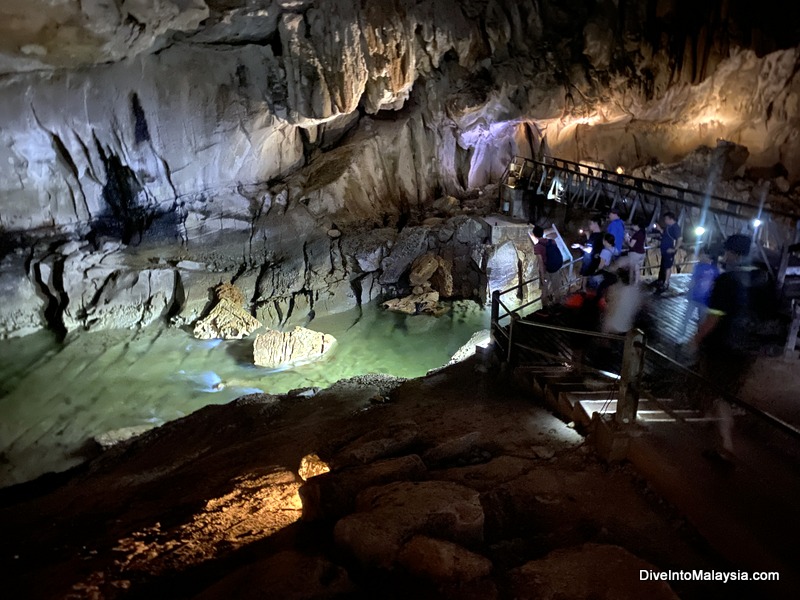
It also has many unique rock formations, stalagmites and more. I was glad I went here last as it was a good combination of features I had seen in the previous caves. It was BIG (but didn’t feel as big as the huge passage in Deer Cave) and had interesting formations as well.
It was a great Show Cave to finish with.
Clearwater Cave is visited on the same tour as Wind Cave as described above.
After you arrive by boat at this cave, there is a rest area. Our tour stopped here for about 20 minutes before continuing. I booked this tour through the National Park Headquarters, but there were many tours here from private operators that had meals set up at this rest area. It would be a fabulous place for lunch and I was a little jealous.
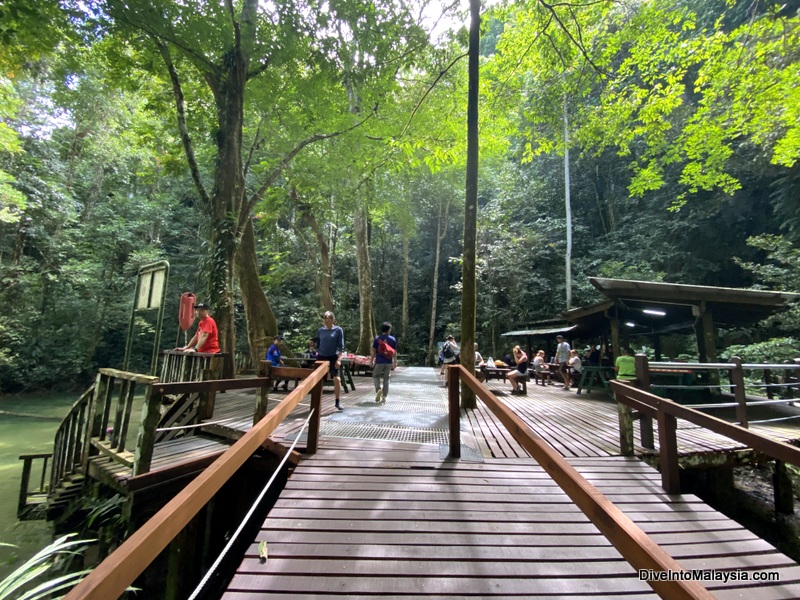
Next to this rest area is a swimming area in a natural lagoon with water from the cave. You can swim after the cave visit. There are also toilets here.
To get to the cave takes 200+ steps. It is quite a sweaty climb, but it’s worth it. I found it was over quicker than I thought it would be.
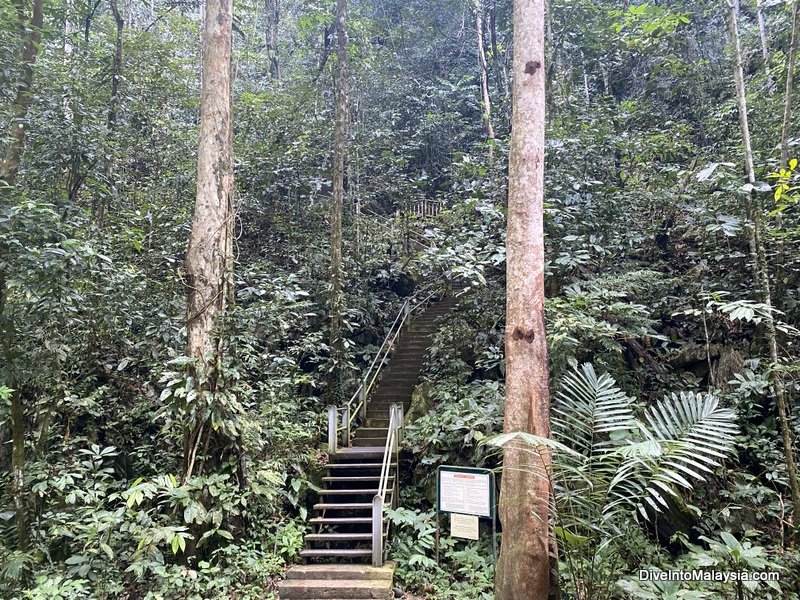
The walk through the cave is the trickiest one, but it’s not really that tricky. There’s boardwalk, steps with a rope to help pull yourself up and a bridge over the rushing river below. It’s an interesting cave with plenty to see.
After the 200+ steps back down to the rest area, it’s time for an amazing swim. The water is cold, but after a minute, I loved it. It felt great on my (incredibly hot and sweaty) body. I am not really a sweaty person but it was humid on these cave visits and the water was the perfect way to cool down.
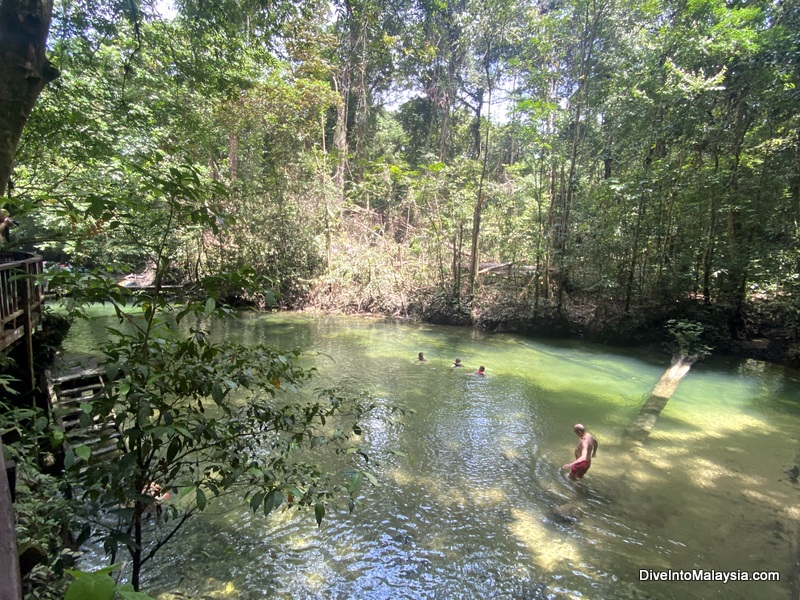
It’s surrounded by the rainforest as well and the whole area is stunning. I can’t recommend a swim here enough. I wish I had time to come back and have another swim!
Then it’s a boat ride back to Park Headquarters.
Lagang Cave Mulu/Fastlane
The final Show Cave you can visit is Lagang on the Fastlane tour. This visit is more intimate than the others with groups of six only allowed in at a time. This keeps things darker and makes for a more interesting experience.
Lagang Cave is famous for its stalactites, stalagmites and intricate formations. It also has large passages and walkways that take you from the bottom to the top of the cave.
Most of the tour is by torchlight and you can see the unique fauna and flora that call this cave home including blue racer snakes, swiflets, bats and large cave insects.
The Fastlane tour departs around 2pm and lasts for two and a half hours. To get here involves a short boat ride and a 15-20 minute walk through the rainforest and up steps to the entrance. There’s then a 1.5 kilometre walk through the cave.
If you are an experienced caver, there are also more adventurous tours of this cave.
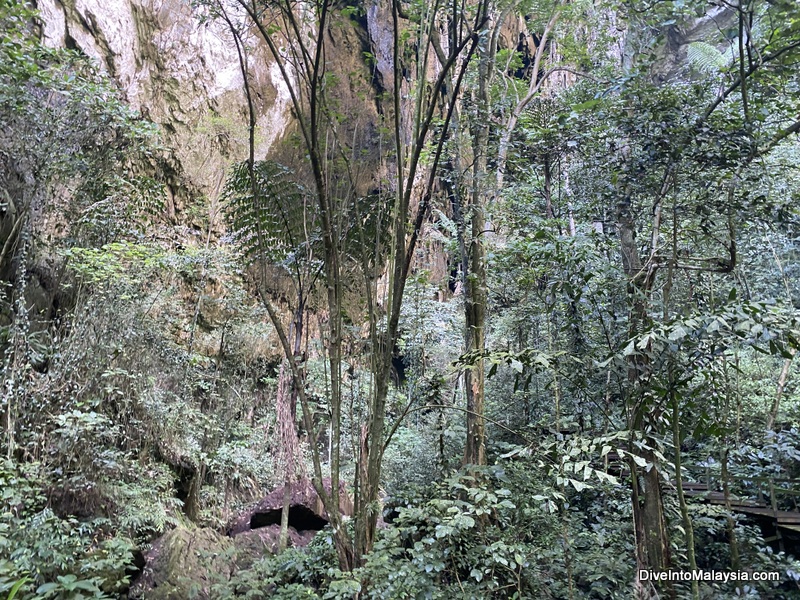
Adventure Caves
Experienced cavers will find plenty to do at Mulu Caves Malaysia. There are beginner, intermediate and advanced experiences, and they can all book out so book in advance. Most are full day trips but some are half day or overnight.
There are options in the Clearwater Cave and Lagang Cave described above or you can explore Racer Cave or Sarawak Chamber which is an overnight adventure.
You can find more details on adventure Mulu Caves Sarawak tours here.
Where Is Mulu Caves Sarawak Malaysia?
Address: Gunung Mulu National Park, Miri, Sarawak
Mulu Caves are in the Gunung Mulu World Heritage Area close to the Mulu Airport.
Flying is the most realistic way of getting here with daily flights from Kuching, Kota Kinabalu and Miri to Mulu Caves on MASwings, a regional operator for Malaysia Airlines. I flew from Kuching to Mulu and then on to Miri afterwards and it was very straightforward.
From the Airport, it’s a quick transfer or 15-20 minute walk to Park Headquarters where all tours to the Mulu Cave Malaysia start.
You can find more details on how to get to Mulu in my full guide here.
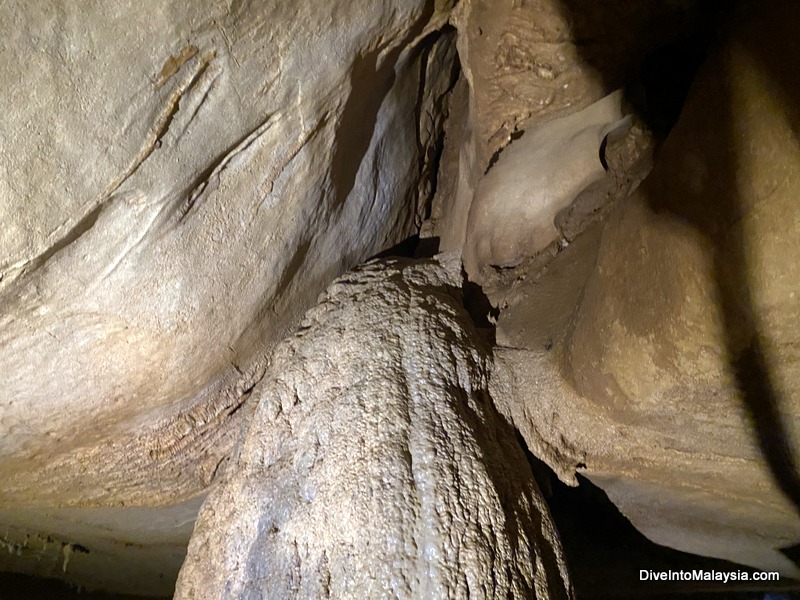
Mulu Caves Ticket Prices
You don’t pay for the caves individually and instead pay for tours which include visiting the caves. Prices are correct at time of publishing.
The tour to Deer and Lang Caves costs RM35.
The tour to Wind and Clearwater Caves costs RM67.
The Fastlane tour to Lagang Cave costs RM65.
You also need to pay for the Mulu World Heritage 5 day pass. If you stay in the World Heritage Area for more than five calendar days, you’ll need a second pass.
Currently, this costs RM30 for foreign adults and RM10 for kids 6 – 18 years old. Malaysians pay half the price.
Mulu Caves Package
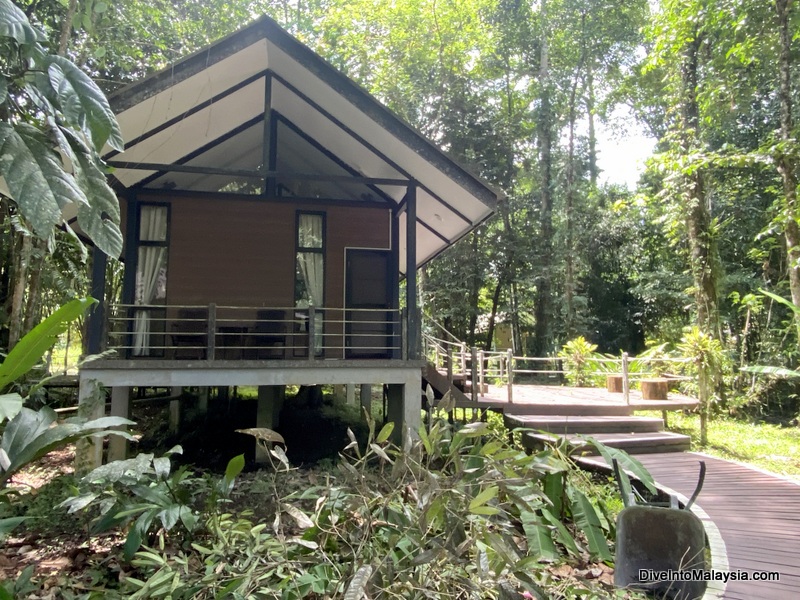
Mulu Caves is not somewhere you visit on a day trip. You need to stay at least overnight or, ideally, at least a couple of nights. There is plenty to see and do around the Mulu Cave National Park in addition to the caves.
While you could just show up and try to organise everything, this is a tiny place. There are only so many beds you can stay in and tours you can do and there are more seats on flights coming into Mulu than there are tours and beds. Especially during peak times from June to September and in Malaysian school holidays, you should book everything in advance.
Thankfully, it is not hard to book Mulu Caves packages. You can google a local travel agent in Malaysia who can book it all for you or you can book direct with the Mulu Caves tour operator here.
I booked direct online before I went and it was all very smooth.
You can also read our guide to Mulu accommodation here.
Best Time To Visit Mulu Caves In Sarawak
The Mulu Caves best time to go is in the dry season from June to September. However, this coincides with the peak season so that can also make it trickier to visit then. This time period as well as Malaysian school holidays are peak times to visit so book a minimum three months in advance then.
Book all your cave tours as well because they can sell out and there is no way to go inside the Mulu Caves in Borneo without one of these tours.
This is a rainforest though, and it can rain at any time. Afternoons are particularly likely to be wet at any time of year, so it’s not a big deal to visit at other times.
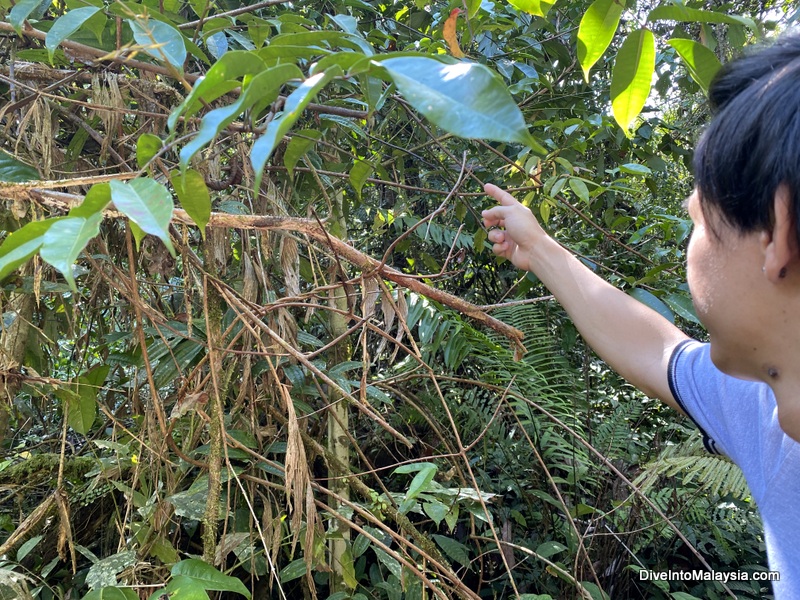
Final Words
The Gunung Mulu National Park Caves are amazing and I highly recommend you visit them and at least try to get to the four main show caves.
They are each unique and beautiful in their own way and the setting in the ancient rainforest helps take the whole experience to another level.
I also recommend visiting Deer and Lang Caves on the first day and Clearwater and Wind Caves second. The latter are the better ones, in my opinion, and it’s nice to keep seeing better and better ones.
I absolutely loved spending a few days here exploring nature and the Mulu Caves Borneo.
Find our full guide to visiting Mulu National Park here.
Looking for other things to do around Miri? Find our full guide here. You can also find our full guide to where to stay in Miri here and all our full guide to Miri here.
Planning a trip to Malaysia? Have any questions? Join our Malaysia Travel Planning Facebook group here now! It’s the perfect place to ask any questions and to be inspired!

